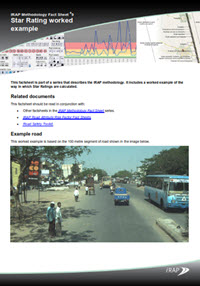

2013 iRAP factsheet – The Global Cost of Road Crashes
Download Click the file icon above to download the file. 2013 iRAP factsheet – The Global Cost of Road Crashes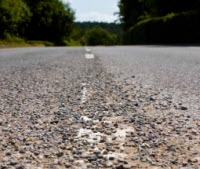
Lane markings ‘rails’ for self-steering vehicles
New cars today do more to protect life than vehicles just 10 years ago, and by 2025, half of the cars on the road in Europe will be capable of “reading” signs and markings.
However, Roads that cars can read, a report published by EuroRAP and Euro NCAP, finds that inadequate maintenance and differences in road markings and traffic signs are now a major obstacle to the effective use of technology in vehicles, such as lane departure warning and traffic sign recognition.
John Dawson (EuroRAP, Chairman) said “Lane markings are now the ‘rails’ for self-steering vehicles.” Michiel van Ratingen added “We set demanding standards for 5-star cars. We must now move towards 5-star roads where the quality of road markings and signs are assured to work with modern vehicles.”

Measuring to Manage: Crash Rates in the UK
The latest report from the Road Safety Foundation shows that single carriageway roads are now 7 times more risky than motorways.
As the flowers by the roadside attest, the main crash type causing death is running off the road. The main crash type causing serious injury are brutal junction impacts.
The report measures and maps the risk of death and serious injury road uses face on the British network where the majority of lives are lost – on motorways and ‘A’ roads outside cities. It shows road travel is getting measurably safer, particularly because of improving vehicle safety.
The report comes at a time when the government has recognised Britain is falling behind other countries and announced the “biggest ever upgrade of our existing roads worth up to £50bn over the next generation”.

Medir para Gestionar: Tasas de Colisiones en el Reino Unido
El último informe de la Fundación para la Seguridad Vial muestra que las vías de una sola calzada ahora son 7 veces más riesgosas que las autopistas.
Como lo atestiguan las flores al lado de la acera, el principal tipo de colisión que causa la muerte es la colisión por salida de la vía. El principal tipo de colisión que causa lesiones graves son los impactos brutales en los empalmes.
El informe mide y mapea el riesgo de muerte y lesiones graves que enfrentan los usuarios de las vías en la red vial de Gran Bretaña donde se pierde la mayor cantidad de vidas – en las autopistas y vías de tipo ‘A’ fuera de las ciudades. Muestra que el viaje en carreteras se está volviendo considerablemente más seguro, particularmente debido a las mejoras en la seguridad de los vehículos.
El informe llega en un momento en que el gobierno ha reconocido que Gran Bretaña se está quedando a la zaga de otros países por lo que ha anunciado la “mayor mejora realizada a nuestras vías existentes con un valor de hasta £50 mil millones durante la próxima generación”.
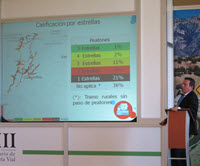
Secretaría de Comunicación y Transportes es sede del 2do taller de ALAC
Delegados de clubes de automovilismo, autoridades viales, bancos de desarrollo, universidades y empresas se reunieron recientemente en México para el segundo Taller de iRAP de América Latina y el Caribe.
Hasta la fecha, iRAP ha sido utilizado por 15 países en la región para evaluar más de 80,000 km de vías. Este extenso conjunto de datos no sólo brinda una base sólida para la inversión en seguridad en cada país, sino que tiene un enorme potencial para servir de marco de referencia regional.
El taller discutió numerosos avances interesantes. Paraguay, por ejemplo, está comprometido a eliminar vías de 1 y 2 estrellas, mientras que en Belice, iRAP está siendo integrado al plan de mantenimiento vial y al programa de obras públicas de la nación.
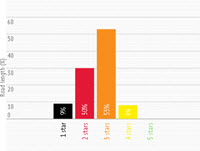
Tratamiento de vías de 1 y 2 estrellas en Australia
AusRAP ha evaluado el riesgo en casi 22,000 km de autopistas nacionales en Australia y ha identificado oportunidades para reducir drásticamente los traumatismos causados por colisiones viales.
El informe, elaborado por la AAA, sostiene que casi 40% de la red nacional está clasificada con 1 o 2 estrellas. Más de 60% de la red inspeccionada está dentro del rango de 3 a 4 estrellas.
El informe de AusRAP también muestra que una inversión de poco más de A$4.7 mil millones tiene el potencial de reducir en más de la mitad el número de vías clasificadas con 1 y 2 estrellas y prevenir más de 36,000 muertes y lesiones graves durante un período de 20 años.
El Plan de Inversión para Vías Más Seguras, que permitiría ahorrar $3.5 en costos de colisiones por cada $1 invertido, incluye contramedidas tales como: barreras de seguridad, resistencia al deslizamiento y carriles de giro en intersecciones.
El informe de AusRAP se elaboró con asistencia financiera del gobierno australiano y con el apoyo de autoridades viales y de transporte del Estado y el Territorio.
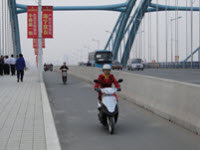
Infraestructura de Sistemas Seguros: aspectos de implementación en países de bajos y medianos ingresos
Un nuevo informe publicado por el ARRB Group examina los aspectos que podrían prevenir la adopción de la infraestructura de ‘Sistemas Seguros’ en países de bajos y medianos ingresos.
El informe es un resumen de un taller realizado en Bangkok, Tailandia como parte del Taller de GRSP / iRAP Asia Pacífico en 2012 que congregó a delegados de gobiernos y autoridades viales de la región de Asia Pacífico. Los objetivos del taller fueron crear conciencia respecto a los tratamientos de la infraestructura de Sistemas Seguros, tales como rotondas, barreras de seguridad y cruces peatonales, y analizar factores que impiden su implementación.
Si bien el costo a menudo se citó como un impedimento, los factores relacionados con el diseño, el nivel de cumplimiento del usuario y el mantenimiento también se consideraron muy importantes.
Los resultados del taller ayudarán a las autoridades viales, investigadores y la industria a comprender las formas en que se pueda acelerar la adopción de tratamientos de infraestructura altamente efectivos. La información también se utilizará para actualizar la Caja de Herramientas de Seguridad Vial.

Erradicando el riesgo en vías provinciales holandesas
Un nuevo informe de ANWB ha determinado que si bien Países Bajos es líder mundial en seguridad vial, aún se requieren esfuerzos adicionales para alcanzar la meta nacional.
El informe sostiene que la mayoría (62%) de las vías provinciales de la nación está clasificada con 1 o 2 estrellas para ocupantes de vehículos. Esto ayuda a explicar por qué más de 25% de las colisiones mortales ocurren en vías provinciales aunque en su totalidad, estas carreteras representan sólo 6% de toda la red vial de Países Bajos.
Las vías provinciales generalmente están bien gestionadas y conservadas pero la combinación de un límite de velocidad alto (80 km/h) y los perfiles de estas vías significa que muchas de ellas no están preparadas para soportar flujos de tránsito pesados.
En el informe se sugieren numerosas mejoras a la seguridad, tales como barreras de seguridad, iluminación de las calles y bandas alertadoras.
Si bien el informe actual se centra en los ocupantes de vehículos, se tiene planeado una segunda edición que analizará elementos únicos de la infraestructura de ciclismo en los Países Bajos.

Manual Internacional de Seguridad Vial
Expertos líderes están colaborando con el objetivo de brindar un ‘Manual Internacional de Seguridad Vial’ para apoyar la implementación de la Década de Acción para la Seguridad Vial de las Naciones Unidas.
El Manual, coordinado por la Monash University, la Comisión para la Seguridad Vial Mundial y la Universidad de Michigan, está siendo elaborado y consolidado en un solo volumen por expertos líderes en seguridad vial, salud pública y aspectos regulatorios, junto con personalidades destacadas de organizaciones no gubernamentales y la industria.
Este libro servirá como un punto de referencia importante para la Conferencia Ministerial Mundial sobre Seguridad Vial, que se realizará en 2015, a la mitad de la Década de Acción para la Seguridad Vial de las Naciones Unidas. Resaltará la importancia de incluir la prevención de lesiones causadas por accidentes de tránsito dentro de la agenda de desarrollo posterior a 2015, como un problema que tiene un impacto en objetivos más amplios para la salud, la reducción de la pobreza, la reducción de las emisiones de carbono y la promoción de la justicia social.
Se espera que el libro sea publicado en mayo de 2014 para que coincida con el tercer aniversario del lanzamiento de la Década de Acción para la Seguridad Vial de las Naciones Unidas.

Los voluntarios simbolizan el espíritu de cooperación
iRAP ha tenido la suerte de contar con apoyo de un grupo de voluntarios que generosamente han compartido su tiempo, experiencia y entusiasmo en aras de la seguridad vial.
Recientemente hemos reconocido con el premio “voluntario 5 estrellas” su valiosa contribución a nuestros esfuerzos de salvar vidas. Los voluntarios reconocidos son:
- Emily McLean, que realizó su voluntariado en Vietnam.
- Nana Soetantri, que realizó su voluntariado en Indonesia.
- Morgan Fletcher, que realizó su voluntariado en México.
- Adam Ritzinger, que realizó su voluntariado en Filipinas.
- Gina Waibl, que realizó su voluntariado en Bangladesh.
- Nicole Borkowsky, que realizó su voluntariado ayudando a construir nuestros sistemas de calidad.
También apreciamos el apoyo que nos han brindado en esta iniciativa las organizaciones a las que pertenecen los voluntarios.
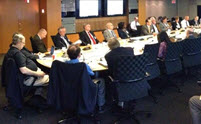
El Taller de Innovación 2013 abre el camino hacia el éxito
Los mejores del mundo en seguridad de la infraestructura vial se reunieron recientemente en la sede del Banco Mundial en Washington D.C. para participar en el segundo Taller de Innovación del iRAP. El taller fue organizado por socios de usRAP, AAA Foundation for Traffic Safety y MRIGlobal.
El Taller de Innovación es una plataforma para que quienes usan las herramientas del iRAP y los que se dedican a la seguridad de la infraestructura vial puedan transferir sus conocimientos de manera rápida y efectiva en un entorno de apoyo mutuo y de amistosa competencia.
Este año, el Taller capturó la enorme escala de los esfuerzos que se están realizando en el desarrollo de políticas, aplicaciones técnicas e investigación alrededor del mundo. Esto son solo algunos ejemplos:

Evaluaciones en marcha en Nepal, Bután y Yemen
Con el apoyo de los bancos de desarrollo, los gobiernos de Nepal, Bután y Yemen están realizando nuevas evaluaciones de riesgo en sus vías.
SweRoad está ayudando a Nepal y a Bután a evaluar cerca de 1.000 km de vías como parte de los Programas de Seguridad Vial del Sur de Asia, auspiciados por el Banco Asiático de Desarrollo. La empresa de Bangladesh, Ferba Instrumentation Logistics, que ha conducido las recientes encuestas del iRAP y la codificación de atributos de las vías de Bangladesh, está brindando apoyo técnico al proyecto (véase la figura).
Con la asistencia financiera del Banco Mundial, Yemen también está efectuando evaluaciones de seguridad y se está anticipando a la construcción de obras y al mantenimiento planificado. RIOH, que está liderando el desarrollo de ChinaRAP, es la responsable de ejecutar las fases de encuesta y codificación.
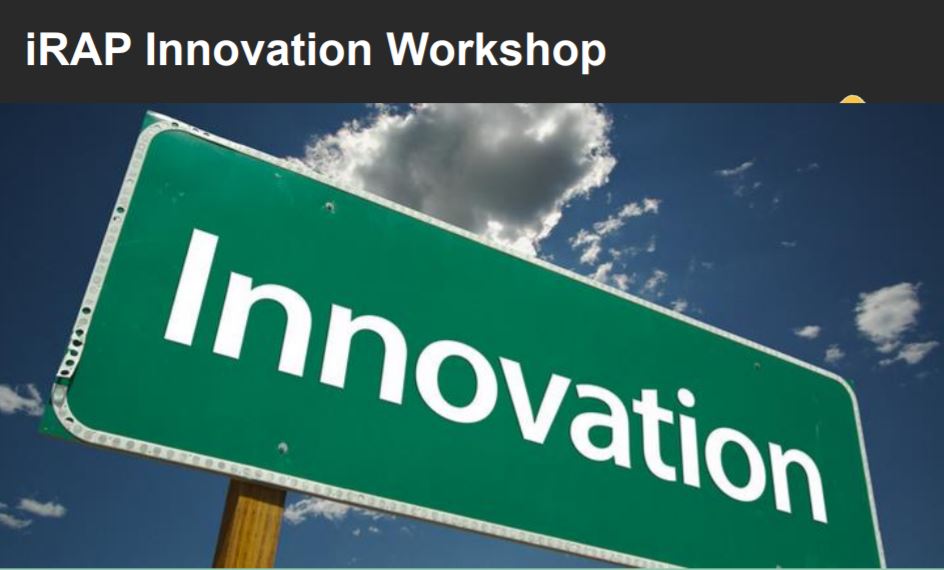
EVENT WRAP UP: Innovation workshop 2013
Among the world’s best in road infrastructure safety gathered recently at the World Bank in Washington for iRAP’s second Innovation Workshop. The Workshop was hosted by usRAP partners AAA FTS and MRIGlobal.
The Innovation Workshop is a platform for those using iRAP tools and those involved in road infrastructure safety more broadly to transfer their know-how quickly to each other through mutual support and friendly competition.
This Workshop captured the enormous scale of effort being made in policy development, technical application and research around the world. As just some examples:

Volunteers capture the spirit of cooperation
iRAP has been fortunate to benefit from the support of a number of volunteers who have graciously shared their time, expertise and enthusiasm for road safety.
We’ve recently been recognising their valuable contributions to our efforts to save lives with the ‘5-star volunteer’ award. The volunteers recognised are:
- Emily McLean, who volunteered in Vietnam.
- Nana Soetantri, who volunteered in Indonesia.
- Morgan Fletcher, who volunteered in Mexico.
- Adam Ritzinger, who volunteered in the Philippines.
- Gina Waibl, who volunteered in Bangladesh.
- Nicole Borkowsky, who volunteered to help build our quality systems.
We also appreciate that volunteers’ home organisations were supportive of the initiative.

Secretaría de Comunicación y Transportes hosts 2nd LAC workshop
Delegates from motoring clubs, road authorities, development banks, universities and companies gathered in Mexico recently for the second iRAP Latin America and Caribbean Workshop.
To date, iRAP has been used by 15 countries in the region to assess more than 80,000km of roads. This rich set of data not only provides a strong foundation for investment in safety in each country, but also holds enormous potential for regional benchmarking.
The workshop discussed numerous exiting developments. Paraguay, for example, is committed to eliminating 1- and 2-star roads, while in Belize, iRAP is being integrated into the nation’s road maintenance planning and the capital works programme.

International Handbook of Road Safety
Leading experts are collaborating to provide an ‘International Handbook of Road Safety’ to support the implementation of the UN Decade of Action for Road Safety.
The Handbook, coordinated by Monash University, the Commission for Global Road Safety and the University of Michigan, is being written by leading road safety, public health and regulatory scholars, along with leading figures from non-governmental organisations and industries, into a single volume.
This book will serve as an important reference point for the Global Ministerial Conference on Road Safety which is due to be held in 2015, at the mid-point of the UN Decade of Action for Road Safety. It will highlight the importance of including road traffic injury prevention within the post-2015 development agenda, as an issue impacting on wider goals for health, poverty reduction, reducing carbon emissions and promoting social justice.
The book is expected to be released in May 2014 to coincide with the third anniversary of the launch of the UN Decade of Action for Road Safety.

Tackling 1 and 2-star roads in Australia
AusRAP has assessed risk on almost 22,000km of national highways in Australia and identified opportunities to dramatically cut road trauma.
The report, produced by the AAA, finds that almost 40% of the national network is rated 1- or 2-star. More than 60% per cent of the network surveyed falls within the 3- to 4-star ranges.
The AusRAP report also shows that an investment of just over $4.7 billion has the potential to more than halve the number of roads rated 1- and 2-stars and prevent over 36,000 fatalities and serious injuries during a 20-year period.
The Safer Roads Investment Plan, which would save $3.50 in crash costs for each $1 invested, includes countermeasures such as: safety barriers, skid resistance and protected turning lanes at intersections.
The AusRAP report was produced with financial assistance from the Australian Government and with support from the State and Territory road and transport authorities.

Eradicating risk on Dutch provincial roads
A new ANWB report finds that although the Netherlands is a world leader in road safety, additional efforts are needed in order to achieve the national target.
The report finds that most (62%) of the nation’s provincial roads are rated just 1- or 2-stars for vehicle occupants. This helps to explain why more than 25% of fatal crashes take place on provincial roads although together these roads account for only 6% of the total Dutch road network.
Provincial roads are generally well managed and maintained but the combination of a high speed limit (80 km/h) and the profiles of these roads means that a great many of them are not suited to handling large traffic flows safely.
Numerous safety improvements are suggested in the report, such as safety barriers, street lights and rumble strips.
While the current report focuses on vehicle occupants, a second edition is planned which will examine the unique features of bicycling infrastructure in the Netherlands.
2012 iRAP report – India overview (Phase 1)
Download Click the file icon above to download the file. 2012 iRAP report – India overview (Phase 1)
Safe System infrastructure: implementation issues in low- and middle-income countries
A new report published by ARRB Group examines issues that are thought to be preventing the uptake of ‘Safe System’ infrastructure in low- and middle-income countries.
The report is a summary of a workshop held in Bangkok, Thailand as part of the 2012 GRSP / iRAP Asia Pacific Workshop involving delegates from governments and road authorities around the Asia-Pacific region. The aims of the workshop were to raise awareness of Safe System infrastructure treatments, such roundabouts, safety barriers and pedestrian crossings, and explore factors impeding their implementation.
Although cost was often cited as an impediment, factors relating to design, user compliance and maintenance were also considered to be very important.
The outcomes of the workshop will help road authorities, researchers and industry understand ways in which the uptake of highly effective infrastructure treatments can be accelerated. The information will also be used to update the Road Safety Toolkit.

Are you a software developer who wants to help save lives?
We are looking for a PHP / JavaScript developer, who is dedicated to their craft, writes code to be proud of and can hit the ground running.
You will be a part of a small creative team that is responsible for all aspects of the ongoing software development from the initial specification, through to developing, testing and launching.
For more information, take a look at: http://www.linkedin.com/jobs?viewJob=&jobId=6867817.
2013 EuroRAP Final report – Ukraine Safer Road Corridors Investment Plan (English)
Download Click the file icon above to download the file. 2013 EuroRAP Final report – Ukraine Safer Road Corridors Investment Plan (English)2013 ARRB Research report (ARR 383) – Safe System Infrastructure
Download Click the file icon above to download the file. 2013 ARRB Research report (ARR 383) – Safe System infrastructure
‘Orange Angel’ and ‘Brazilian Angel’ on the road!
Following the completion of road inspections by the ‘Orange Angel’ and the ‘Brazilian Angel’, assessments are now being carried out for more than 4,000km roads in the State of Sao Paolo, Brazil.
Initially, Star Ratings and Safer Roads Investment Plans will be produced for nine high-priority World Bank-financed corridors.
As part of the project’s capacity building and communications strategy, local stakeholders and World Bank representatives recently participated in a workshop on the iRAP methodology and expected outcomes of the project.
















